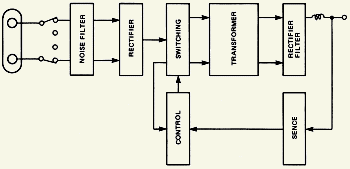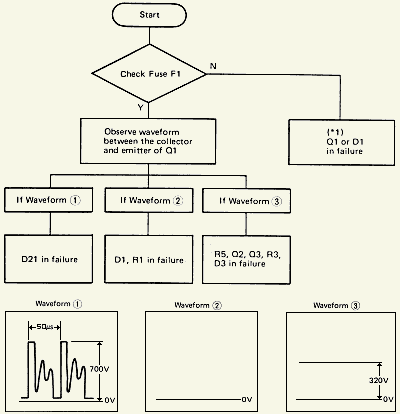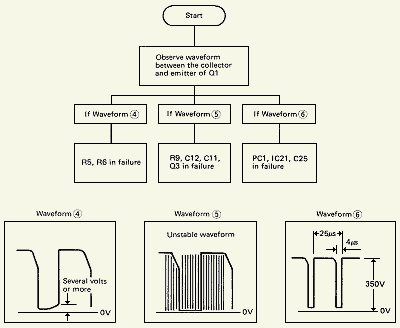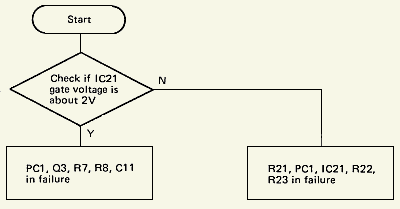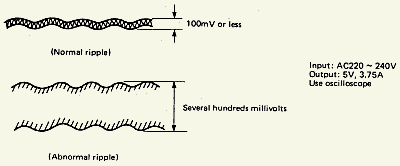| The Power Supply Unit
( of the MZ-700 )
|
|
 ( point to an element to read by the tooltips its data ) |
|
|
|
|
|
|
|
|
1. Trouble kind
2. Finding where is in trouble
2-2. When extremely low output voltage is encountered
2-3. When extremely high voltage is encountered ( 7 ~ 10V )
2-4. Abnormal increase of output ripple In case irregular increase is seen for the output ripple like the one below, it needs to replace C22 and C23 with new ones because they have been fatigued.
|
|
|
Read and download data sheets ( ICs, transistors, diodes etc. ) |
|
